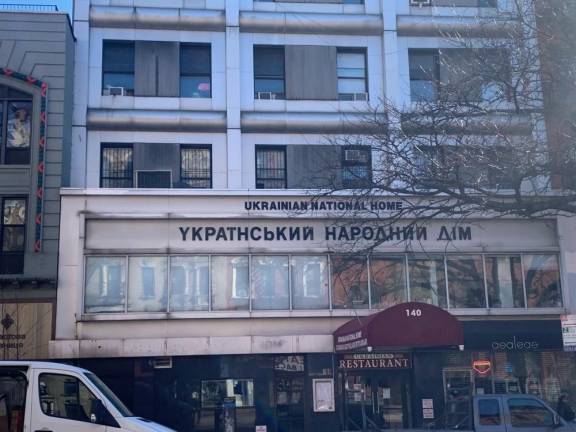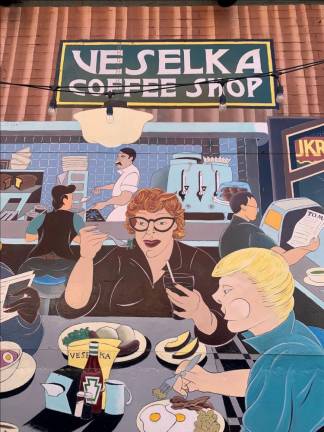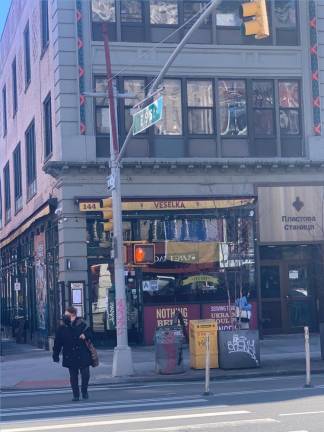In NYC’s Little Ukraine, Anxieties Rise Over Tensions in Ancestral Homeland
Russian moves raise concerns in the East Village’s Ukrainian community



The recent political tension between Russia and Ukraine, widely reported in the international press, has also reverberated within a small enclave of Manhattan.
The area of the East Village centered around First and Third Avenues and 6th and 7th Streets is known as Little Ukraine, known for the Ukrainian Museum and the popular restaurant Veselka.
As of 2011, there were 59,820 people born in Ukraine and living in New York City. (This number does not include Ukrainian-Americans born in New York.) The city’s largest concentrations of Ukrainian people are in Brighton Beach and other parts of South Brooklyn, but Manhattan’s Little Ukraine remains an important cultural center.
“The Ukrainian community has had a hub in the East Village for decades – many arriving following WWII. This generation built the organizations that we have in NYC (and nationwide), built the community centers, the churches – the essence of our community’s foundation,” says Tamara Olexy, director of the Ukrainian Congress Committee of America (UCCA). The UCCA is a national organization but based in Manhattan’s Little Ukraine.
While the neighborhood’s original population has dwindled, with more non-Ukrainians populating the area and cultural mainstays such as the Surma Book & Music Company shuttering in the past few years, those that remain have worked hard to keep their cultural heritage alive.
“Deep Concern”
In the last few weeks, as Russian President Vladimir Putin has amassed tens of thousands of Russian troops along the border with Ukraine, anxiety over the possibility of an invasion has risen here in Little Ukraine.
“The situation in Ukraine is of deep concern to the entire Ukrainian community,” says Maria Shust, director of the Ukrainian Museum on 6th Street and Second Avenue.
“Every Ukrainian-American is united in their support for the independence and territorial integrity of Ukraine,” agrees Olexy.
While denizens of Little Ukraine range from recent immigrants to the descendants of those who arrived as early as pre-WWI, Olexy says the community is united in its concern over the present situation.
“We are one united community that works together to support our unique heritage and culture,” says Olexy. “We all have some sort of connection to Ukraine, and given that there is a hot war in our ancestral homeland we are absolutely concerned with what is happening.”
This is not the first time residents of the neighborhood have come together in concern for events in Ukraine. In 2015, as protests mounted in Kiev against the Russian occupation of the Crimea, Ukrainian-Americans living in Little Ukraine built their own shrine on the corner of Second Avenue and 9th Street. They placed flowers and candles there to protest the Crimean annexation.
This spirit of activism has shown itself again in response to the present tensions. On January 22, the Day of Unity of Ukraine, some New Yorkers held a rally in Union Square. A few took photos with signs saying #StandWithUkraine and #StopPutinNow, sharing them on social media to show their support.
Whatever the eventual outcome across the ocean, those in Manhattan remain united in support of their native country. “Our Ukrainian community stands unified behind its ancestral homeland and is doing all in its power to assist – be it by advocating for additional US assistance, conducting humanitarian aid projects [or] spreading the truth about what is really going on,” says Olexy.
“As Americans, we strongly believe that a democratic and independent Ukraine is in the national security interests of the United States and consistent with our traditions of support for individual freedom and self-determination.”